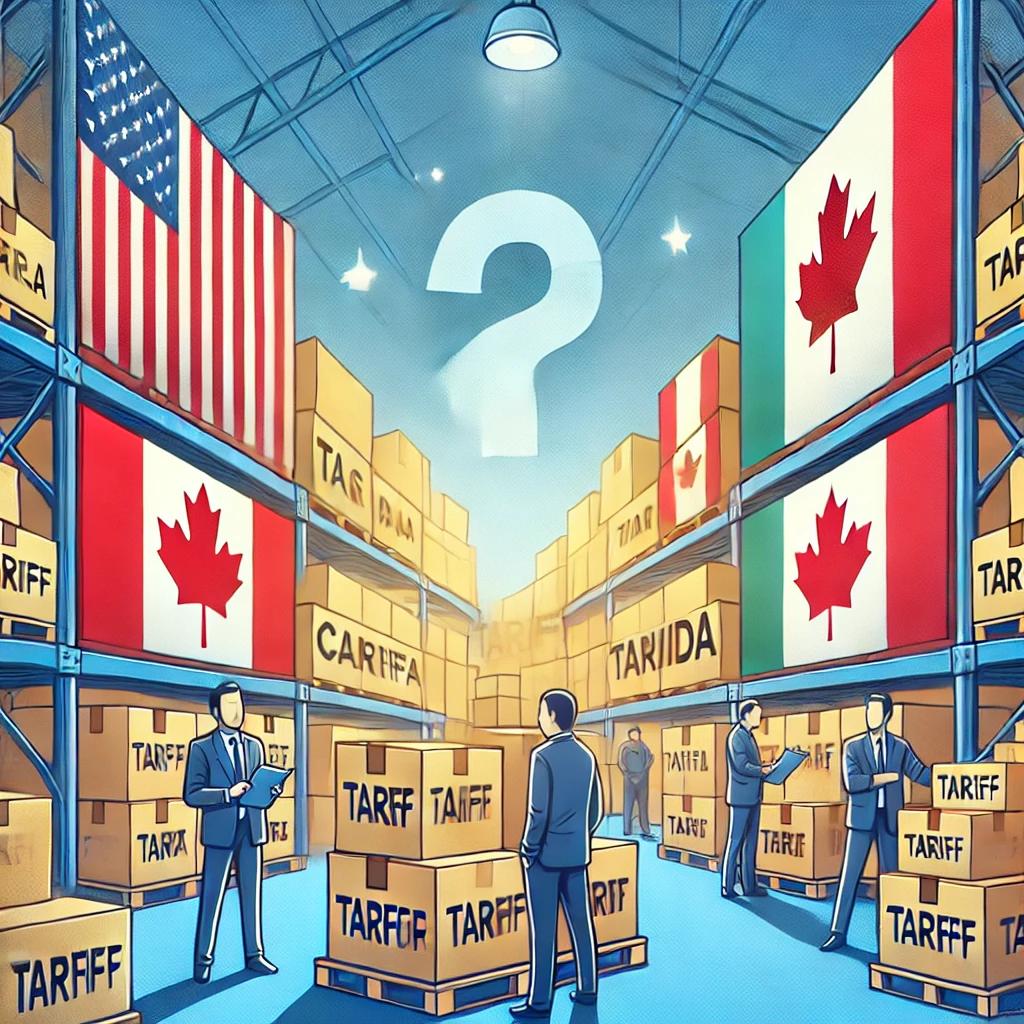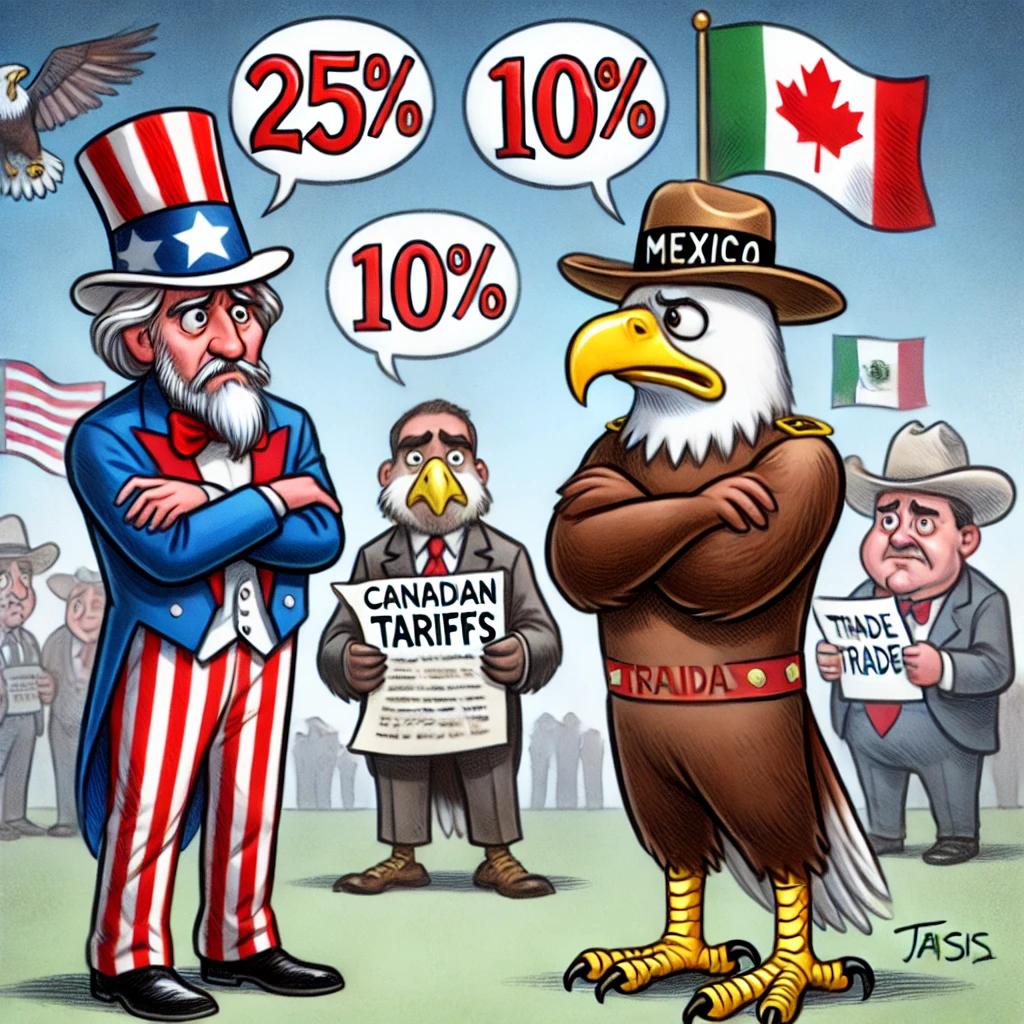In February 2025, the U.S. under President Donald Trump announced new tariff measures against its neighbors, Canada and Mexico. The decision to impose a 25% tariff on imports from Canada and a 10% tariff on Canadian energy exports has created a wave of uncertainty in global trade. The move signals a sharp shift in U.S. trade policy and has sparked concerns among businesses, lawmakers, and citizens in all three countries.
In this blog post, we’ll break down the new tariffs, their potential impact, and the wider diplomatic ramifications.
What Are the New Tariffs?
President Trump’s administration has decided to impose hefty tariffs on certain imports from both Canada and Mexico. Specifically, a 25% tariff on all goods imported from Canada will take effect immediately. Additionally, a 10% tariff will be levied on energy exports, including oil and gas, coming from Canada to the U.S. These measures follow a pattern of trade policies aimed at strengthening U.S. production while minimizing reliance on foreign goods.
At the same time, Mexico faces similar tariff measures, though the details of these policies are less specific. Mexico’s government has condemned these tariffs, stating that they will have a detrimental effect on both economies.
The Immediate Reactions
The immediate response to the tariff announcements has been mixed. Economists and business owners in both Canada and Mexico are concerned about rising costs. Increased tariffs typically lead to higher prices for consumers. This could also result in slower economic growth for all three countries involved.
The Canadian government quickly condemned the tariffs, calling them unjust. Canada’s Trade Minister has suggested the country will consider retaliatory tariffs, particularly on U.S. agricultural products. Given that trade between the U.S. and Canada is a critical part of both economies, such a move could disrupt several industries, including farming and manufacturing.
Why Is This Happening Now?
These new tariffs are part of a broader strategy by the Trump administration to take a more aggressive stance on trade deals. The U.S. has long been the world’s largest consumer of foreign goods, but President Trump has argued that unfair trade practices have hurt American businesses. By imposing tariffs, he aims to level the playing field and encourage companies to shift production back to the U.S.
Many analysts believe that the timing of these tariffs is also politically motivated. Trump has been under pressure to show that he is taking action on trade imbalances before the 2028 presidential election. He hopes that these tariffs will bolster his “America First” policy, appealing to voters concerned about jobs and economic recovery.

Potential Diplomatic Fallout
These tariffs could significantly affect diplomatic relations between the U.S., Canada, and Mexico. The North American Free Trade Agreement (NAFTA), which was replaced by the United States-Mexico-Canada Agreement (USMCA) in 2020, is supposed to foster smooth trade between the three countries. However, this move could undermine the spirit of cooperation that was intended with the agreement.
For Canada and Mexico, this is a clear challenge. Both countries are key allies and trading partners of the U.S. These new tariffs may weaken diplomatic ties, and the governments of both countries have already indicated that they may take legal action through international trade bodies like the World Trade Organization (WTO).
The Bigger Picture
This decision to impose tariffs could have ripple effects in the global economy. For example, increased costs could lead to inflationary pressures in the U.S. and Canada. Higher energy costs could make U.S. consumers pay more at the pump and increase overall living expenses.
In addition, these new changes may prompt other countries to reconsider their own trade policies. China and the European Union have already expressed concerns over the potential for increased protectionism worldwide. If other countries retaliate, it could trigger a series of escalating trade wars.
What’s Next?
It’s difficult to predict exactly how these tariffs will evolve. As mentioned earlier, Canada and Mexico may implement retaliatory tariffs. These could target specific U.S. industries like agriculture, technology, and automotive manufacturing. Additionally, diplomatic negotiations are likely to heat up as leaders in both Canada and Mexico look for ways to mitigate the economic fallout.
Trump’s administration will likely continue to push for more aggressive trade policies. But with rising domestic opposition to these tariffs, there could be shifts in the political landscape as 2028 approaches.
Conclusion
The new tariffs between the U.S., Canada, and Mexico have triggered a wave of uncertainty in global trade. While they’re part of a broader “America First” strategy, these measures could have negative consequences for the economies of all three countries involved. They may also strain diplomatic relations, as Canada and Mexico look for ways to respond.

As the situation develops, it’s important to stay updated on how these new changes evolve and what actions both governments take. Global trade dynamics are ever-changing, and this is just the beginning of what could be a more protectionist future.
“The Effect of Tariffs on Trade and Economic Growth” – A study that examines the implications of tariffs on global trade and economic development.
“U.S. – Canada Trade Relations: Tariffs and Trade Policy” – A detailed overview of the history and current state of trade relations between the U.S. and Canada, including the impact of tariffs.

